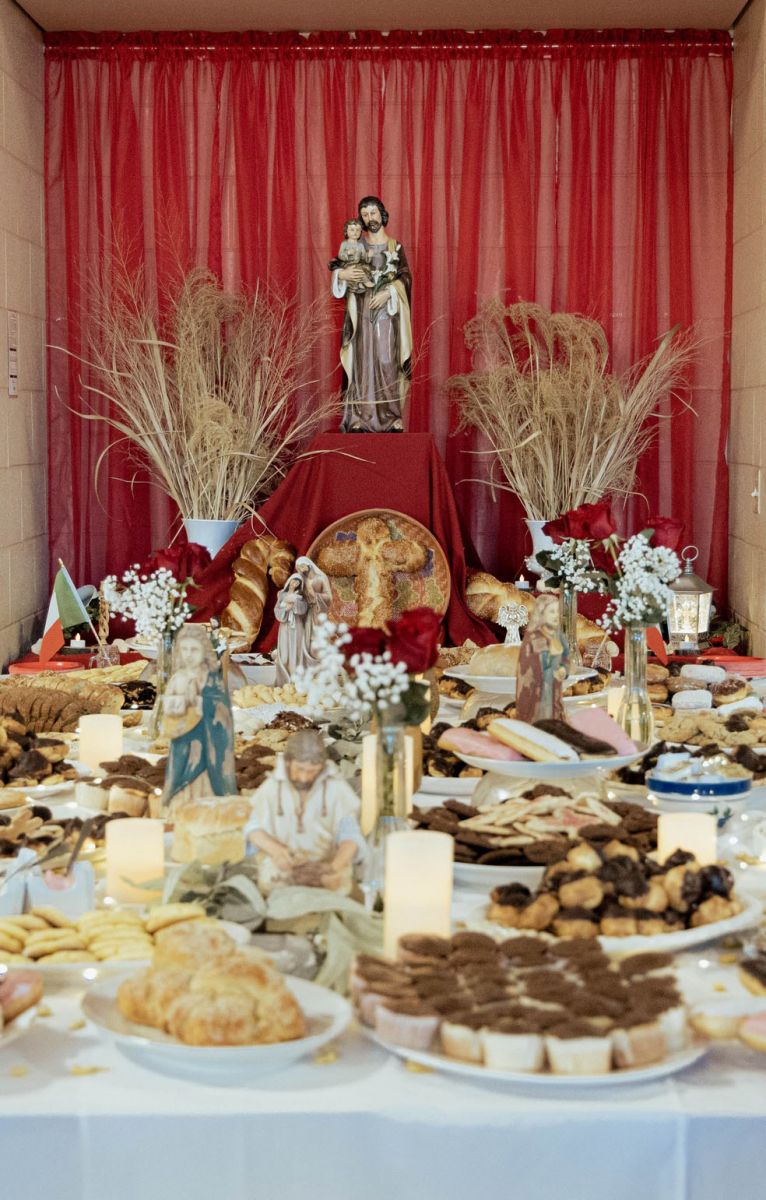St. Joseph Altars a Display of Devotion
By Amanda Hudson, News Editor
March 23, 2023
DIOCESE—The idea of St. Joseph altars or tables has been growing to new places in the Rockford Diocese over the past few years, as evidenced by the photos featured in this issue.
 |
St. Anthony of Padua is a home parish for area Catholics of Italian descent and has had an annual St. Joseph altar since the 1960s. The pastor back then saw someone’s home altar, which were popular at that time, and asked parishioners if they’d like to have one at the parish. It was held for several years, Gullo says, then went on hiatus for a couple of years, then started up again.
It has been going strong ever since, growing to span the length of the parish hall, complete with a hand-painted Italian landscape background, several tables filled with goodies, and crowds that come to view the altar and enjoy cookies and coffee on Saturday evening and to partake of a meatless pasta meal on Sunday.
The altar was, however, derailed for two years during the recent pandemic. Last year a smaller, but still lovely, altar was constructed in the parish church. This year marks a return to the usual impressive display, and it feels “almost brand new,” Gullo says.
St. Anthony’s altar is quite a process. A core group of about 12 people oversees things like omelets, cakes, cookies, kitchen, servers and what Gullo calls “traffic control.”
“We don’t want anyone standing outside or on the stairs,” she explains, so the church is used as a “holding area” for those coming on Sunday for the traditional meatless pasta dinner. When chairs open up downstairs, volunteers direct groups to head down to be seated.
Over 100 volunteers each year are kept busy cooking, serving and cleaning up, Gullo says. From 18-25 people gather to bake cookies from 9 a.m. until 2 p.m. each day the week before.
Since organizers never know just how much will be contributed, they purchase a few cakes each year, but the majority are made by parishioners, with some baking two or three cakes for the event. “We usually receive around 70 cakes, and people also bring in cookies,” Gullo says.
Anything not served that Sunday is taken to the Poor Clares Monastery, the Rockford Rescue Mission and Carpenter’s Place, she adds.
St. Joseph altars are known for the fig-filled pastries called spera that are shaped into a variety of shapes including fish, crosses, hearts, monstrances, flowers and peacocks. Although spera can be edible, most at St. Anthony are inedible and stored from year to year. Some of their big spera, says Gullo, are 40 years old now.
However, she names pignolati as the item that takes the longest to create. Dough is made and pinched/rolled into small kernels and deep fried. The cooked kernels are put into bags, which absorb the grease, and are re-bagged for each of three days to remove all the excess grease. Then they are coated with a sugar and honey (or corn syrup) mixture, clustered together and formed into a pyramid shape.
A book published last year by Laura Padron, “Building St. Joseph Altars: A Feast for the Soul,” provides recipes and instructions, as well as history, the St. Joseph novena, and all the ins and outs of creating a St. Joseph altar at home or in a parish.
Gullo recommends that creators of new St. Joseph altars start small and grow from there as people volunteer their time and skills. She and Joan are considering who might be able to take over from them one of these years. Although they have their eye on “a few people,” they are not concerned about it.
“We figure St. Joseph is going to tap someone on the shoulder,” she says.
| Shop Religious items at HOLYART.COM |














